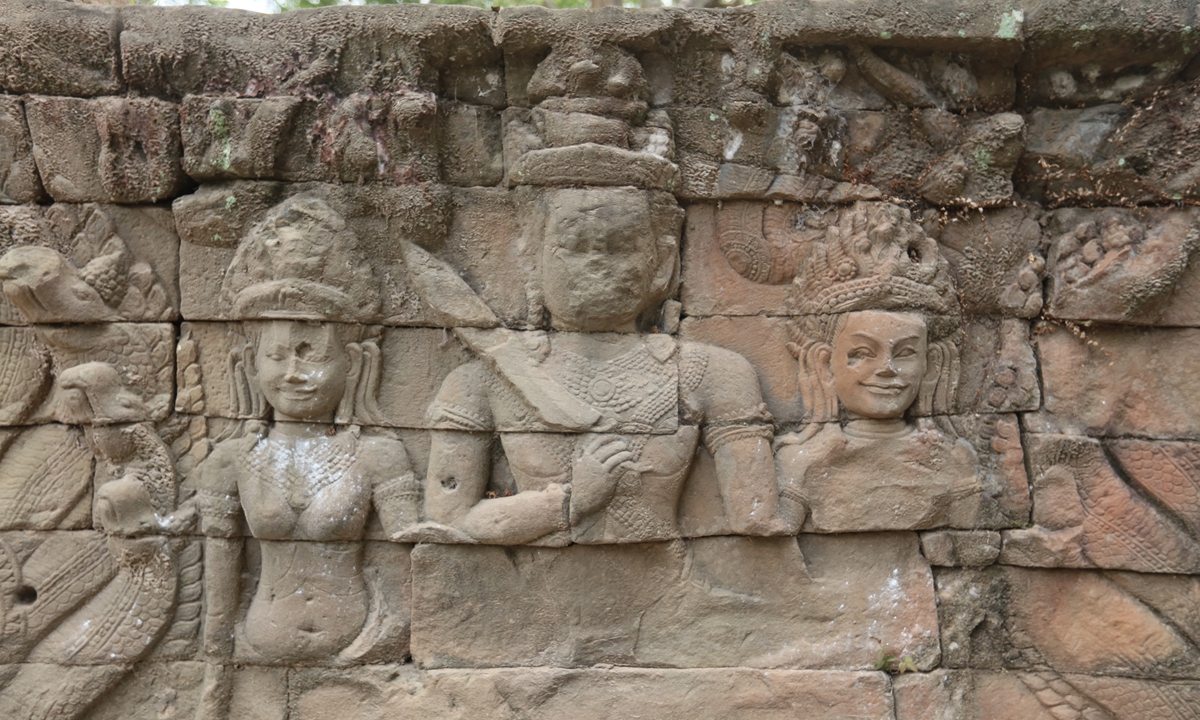Restoration of historical sites in Angkor, Cambodia assisted by China amid pandemic
By Ji Yuqiao Source: Global Times Published: 2020/7/30 22:50:42

Photo:Courtesy of Chinese Academy of Cultural Heritage
The Chinese Academy of Cultural Heritage has helped Cambodia to restore the royal palaces in the ruins of Angkor and the research work has not been suspended, even amid the COVID-19 pandemic. Chinese experts have examined excavated relics and speculated that China and Cambodia had frequent exchanges in ancient times.The restoration project started in November 2019 and is set to last for 11 years. It is the third Angkor restoration project assisted by China, one employee of the Chinese Academy of Cultural Heritage told the Global Times on Thursday. When it is completed, the ruins will be transferred to a tourist-friendly archeological park.
"A laboratory for protecting cultural relics and an exhibition hall will be built," the employee said. The further archeological research will aim at preserving stone carvings.
Before restoration, the research team eliminated dangerous factors around the northwest gate of the royal palaces and completed construction of scaffolds.
The wooden structures of some palaces have been eroded and just stone foundations are left, as the employee described. The upper part of a temple at the center of the ruins has also collapsed.
After the outbreak of the COVID-19 pandemic, the team carried out epidemic prevention work at the scene. Although on-site excavations were suspended, the research work continued. Chinese researchers have been working hard to study the unearthed cultural relics and ancient communication between the two countries.
The leader of the team, Wang Yuanlin, told Xinhua that a large number of living utensils were found in the excavation area, such as pottery pots, celadon bowls, black glazed porcelain and other unearthed objects, including Chinese porcelain pieces.
Wang said these unearthed porcelain pieces is evidence of close China-Cambodia cultural communication in ancient times.
The ruins of the royal palaces with unique historical, cultural and artistic value are located in the center of Angkor Thom, where many kings lived from the 5th to 19th centuries. The restoration project will cover a 142,000-square-meter area within the city wall.
In the next step, the research will continue to carry out excavation work on the outer courtyard of the northwest gate and the trench, and will clean up the stone items scattered in the courtyard.
The ruins of Angkor were included in the World Heritage List of the United Nations Educational, Science and Cultural Organization (UNESCO) in 1992. Cambodia and UNESCO launched an international action to preserve the ruins in 1993, Xinhua reported.
China was one of the initiators and earliest participants in the preservation work and has helped restore two historical sites at Angkor.
Posted in: CULTURE & LEISURE